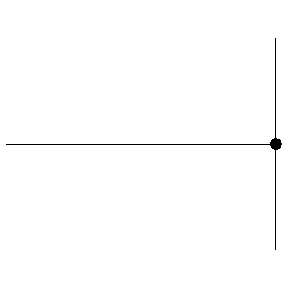Say we are looking for a solution to the Helmholtz equation $$(\Delta + k^2) u = 0,$$ in in the upper half space ($y > 0$) in 2D with a Dirichlet boundary condition on the $x$-axis, that is, $u(x, 0) = 0$. Also, we have an incident wave $u^{inc} = e^{-iky}$ which is orthogonal to the the boundary.
Then the solution can be obtained by the method of images as $$u(x, y) = u^{inc}(x, y) -u^{inc}(x, -y).$$
Now the second term on the RHS represents the wave that reflects off the boundary. My question is, how is there any reflection when we have a Dirichlet boundary condition? I thought Neumann boundary conditions are required for a wave to reflect at a boundary? Dirichlet conditions transmit the wave, not reflect it?
So what am I misunderstanding here...can you have a problem with a Dirichlet boundary condition yet the waves also reflect off the boundary?
Answer
This is a common misconception about what boundary conditions do and how they do it (for example here). You discussed two types of boundary conditions, Neumann and Dirichlet. In Neumann boundary conditions, we impose that the derivative of the variable normal to the boundary is specified, generally to be zero. With Dirichlet, we impose the value that the variable takes on the boundary.
In both cases, waves are reflected. How the reflection behaves depends on which boundary condition you use. I have taken the following images from this page.
For a "hard" boundary, aka a Dirichlet boundary, we get:
in this case, incident waves are reflected out of phase from the original wave.
For a "soft" boundary, aka a Neumann boundary, we get:
where now we can see that the incident wave is reflected in phase.
So, for these simple boundary condition types, you will always get some sort of reflection. If you want non-reflecting conditions, you need to use a characteristic decomposition of the system of equations and find the characteristics and the speeds at which they travel. Then you need to solve for a boundary value that will match those characteristics exactly (possible in 1D, generally not possible in 2/3D). This will allow waves to transmit with no reflection. The method is discussed in my previous answer and is specific to your system. And far too involved to answer here.


No comments:
Post a Comment